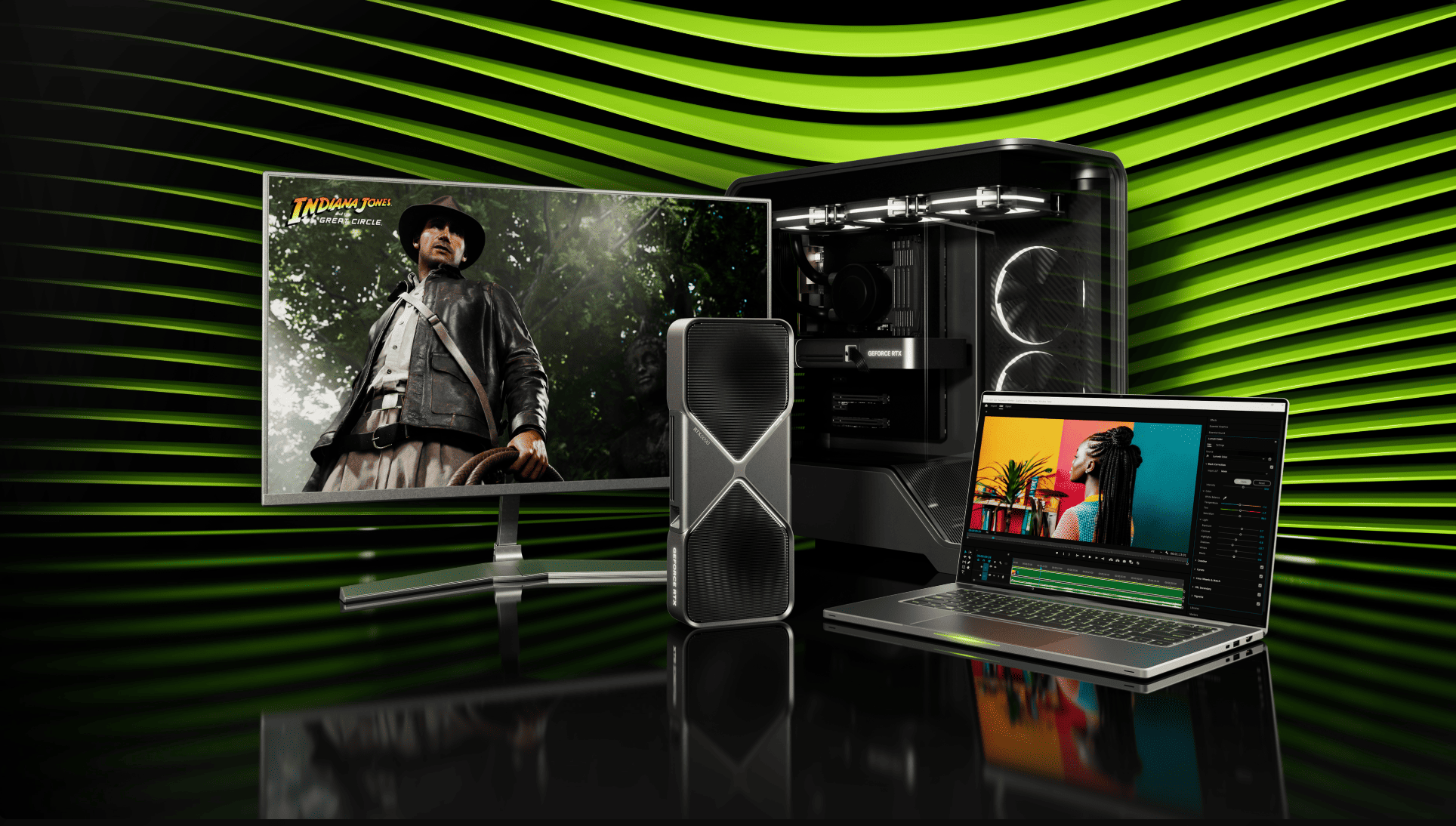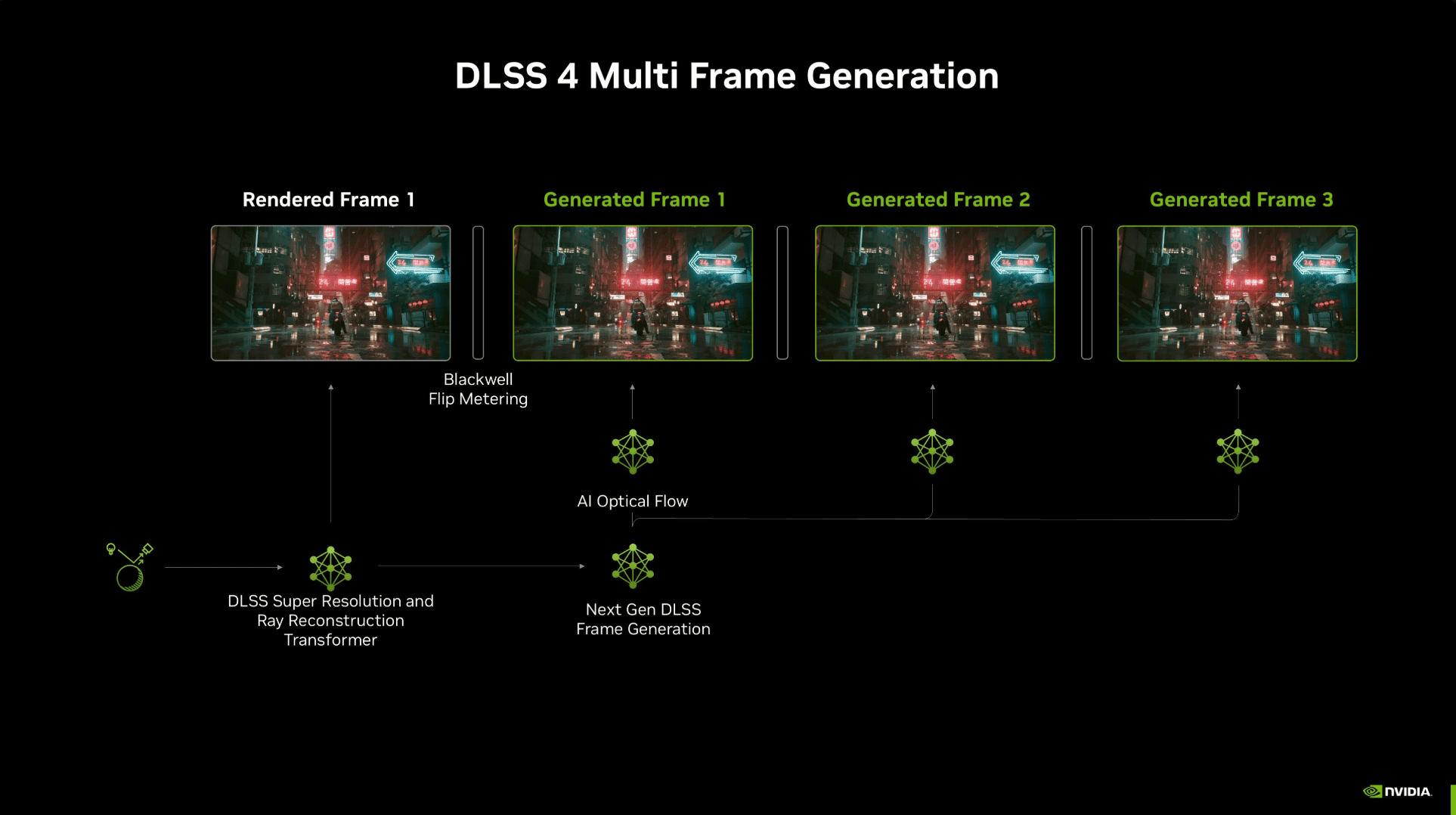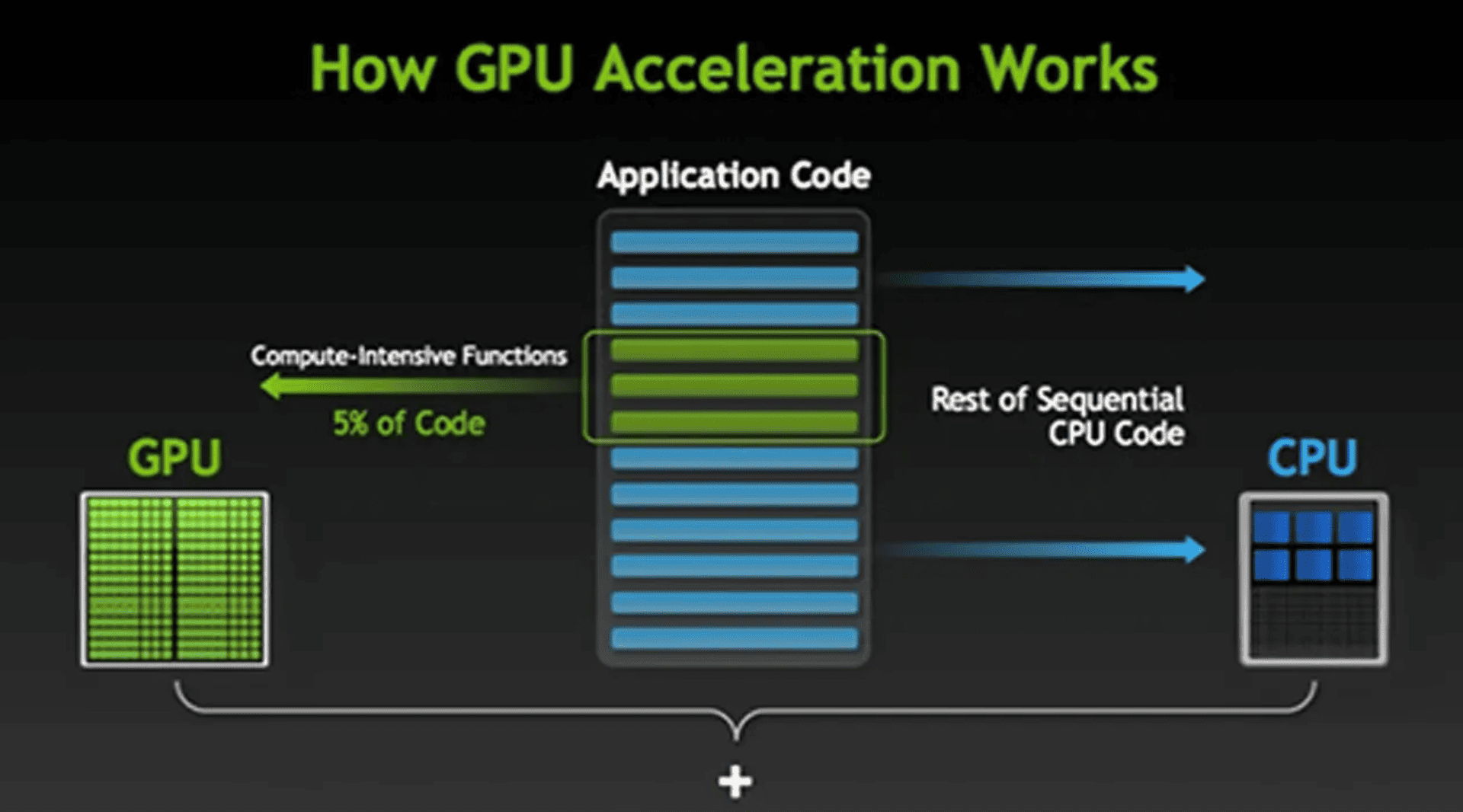
GeForce RTX 5070 GPU
According to reports from multiple tech sources, NVIDIA has unveiled the GeForce RTX 5070, a new graphics card set to launch in February 2025 at $549, promising performance comparable to the previous generation’s flagship RTX 4090 through advancements in AI and DLSS 4 technology.
Blackwell Architecture and Performance

The NVIDIA Blackwell architecture, powering the RTX 50 series GPUs, introduces significant advancements in AI-driven rendering and performance. The GeForce RTX 5070 features 6,144 CUDA cores, 192 Tensor Cores, and 48 RT Cores, with a boost clock of 2512 MHz1. Blackwell’s innovations, combined with DLSS 4 technology, enable the RTX 5070 to achieve performance levels comparable to the previous generation’s RTX 4090, despite having fewer CUDA cores2.Key features of the Blackwell architecture include:
- Fifth-generation Tensor Cores and fourth-generation RT Cores for improved AI and ray tracing performance3
- GDDR7 memory, providing higher bandwidth and improved efficiency4
- Advanced Power Gating and Low Latency Sleep for better power management in laptops5
- Support for neural shaders and digital human technologies3
- 40% faster AI model processing with 30% less VRAM usage compared to previous generations6
These architectural improvements, coupled with DLSS 4’s Multi Frame Generation, allow the RTX 5070 to deliver up to 8x performance boost over traditional rendering in supported games37.
The Blackwell architecture marks a significant leap in energy efficiency for NVIDIA’s GPUs, boasting a 25-fold improvement over its predecessor, the Hopper architecture1. This remarkable advancement is achieved through several key innovations:
- Advanced power management techniques, including dynamic power gating and low-latency sleep modes2
- Utilization of GDDR7 memory, which operates at lower voltages than GDDR6 while delivering higher bandwidth3
- Implementation of a dedicated RAS (Reliability, Availability, and Serviceability) engine for AI-based preventative maintenance and diagnostics4
- Optimized chip design using TSMC’s custom-built 4NP process, enabling higher transistor density and improved power efficiency4
Despite these efficiency gains, Blackwell GPUs still demand substantial power, with high-end models like the B200 consuming over 1,000W per GPU5. This necessitates advanced cooling solutions, particularly liquid cooling, which is expected to see increased adoption in data centers to manage the thermal output of these powerful processors5.
DLSS 4 and Multi-Frame Generation

DLSS 4, introduced by NVIDIA at CES 2025, brings Multi Frame Generation as a key feature for RTX 50 Series GPUs.
This technology generates up to three additional frames for every traditionally rendered frame, significantly boosting frame rates.12
It can increase frame rates by up to 8 times compared to conventional rendering methods, revolutionizing gaming performance.
The new AI models in DLSS 4 run 40% faster and consume 30% less VRAM than earlier versions.34
High-end GPUs like the RTX 5090 achieve 4K gaming at 240FPS with full ray tracing enabled, showcasing DLSS 4’s power.
Key improvements in DLSS 4 include enhanced efficiency, better AI processing, and higher frame rates for demanding gaming scenarios.
- Enhanced Super Resolution and Ray Reconstruction using transformer-based AI models5
- Backward compatibility with 75 games supporting Multi Frame Generation at launch1
- Integration of neural networks into programmable shaders, allowing for up to 7x texture compression6
- Reflex 2 technology, reducing latency by up to 75% to compensate for the additional processing time of Multi Frame Generation7
These advancements not only boost performance but also contribute to reduced e-waste and energy consumption by extending the viability of older hardware8.
Comparison with RTX 4090 and 4070

The RTX 5070’s performance focuses on DLSS 4 and AI-driven features, as its raw specs differ greatly from the RTX 4090.1
The 5070 includes 6,144 CUDA cores, compared to the 16,384 cores in the RTX 4090.
It comes with 12GB of VRAM, while the RTX 4090 features 24GB for handling larger workloads and textures.
In terms of memory bandwidth, the 5070 delivers 672-768 GB/s, while the RTX 4090 reaches 1008 GB/s.2
Compared to the RTX 4070, the 5070 shows slight improvements in core count (6,144 vs 5,888) and clock speed (2512 MHz vs 2475 MHz).
The 5070 uses GDDR7 memory and Blackwell architecture, providing a 20-30% boost over the RTX 4070 in most games.
DLSS 4 and neural rendering help the 5070 match RTX 4090 performance in specific AI workloads and supported games.34
Thermal Management and Cooling Advances

The Blackwell architecture’s high power consumption requires advanced thermal solutions, especially for data center applications.1
Direct Liquid Cooling (DLC) systems, like Supermicro’s solutions, efficiently manage heat in Blackwell servers consuming up to 12kW per unit.2
CoolIT Systems offers AHx240 and AHx180 liquid-to-air CDUs, designed specifically for NVIDIA DLC server racks.3
Lenovo’s ThinkSystem N1380 Neptune uses warm water cooling, reducing power consumption by up to 40% over traditional methods.4
Motivair’s ChilledDoor® Rack Cooling System provides advanced air cooling, offering flexible options for certain Blackwell GPU setups.5
These innovations enhance performance, improve reliability, and boost energy efficiency in AI data centers.
